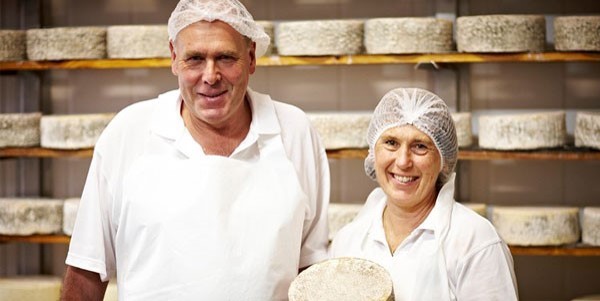Opening the Tricks of Artisanal Cheese Making: A Detailed DIY Guide
In the world of culinary craftsmanship, artisanal cheese making stands as a testimony to the fragile balance between custom and technology. As we embark on this journey to debunk the art of developing charming cheeses, we are encountered with a tapestry of skills and tricks waiting to be untangled.
Picking the Right Milk
When beginning on the journey of artisanal cheese production, the selection of milk plays an essential duty in figuring out the top quality and features of the final product. The kind of milk chosen affects the flavor, texture, and in general profile of the cheese.
Furthermore, the resource of the milk, whether from cows, goats, sheep, or buffalo, contributes unique flavors and qualities to the cheese. Each type of milk brings its very own nuances, allowing for a wide range of cheese varieties to be crafted based on the selected milk.
Culturing and Coagulating
To start the cheese-making procedure, the vital steps of culturing and coagulating should be meticulously performed to change milk right into curds and whey. The kind of culture made use of can considerably impact the taste, structure, and ripening of the final cheese item.

The timing and temperature level control during culturing and coagulation are critical variables that influence the last outcome of the cheese. Correct execution of these actions is important to make sure the wanted texture, taste, and uniformity of the artisanal cheese being created.
Draining and Pressing Curds
After the milk healthy proteins have actually coagulated and the curds have been cut to launch whey, the following important action in artisanal cheese making involves draining and pushing the curds to attain the wanted structure and consistency of the last cheese product. Draining is the procedure of dividing the curds from the whey. This can be done by moving the curds into a cheesecloth-lined colander or mold and mildew and enabling the whey to drain pipes off naturally. The moment for draining can vary depending on the kind of cheese being made and the desired wetness web content.
Pressing assists get rid of any type of remaining whey and compacts the curds to form a strong cheese wheel. Correct pushing and draining pipes are vital actions that significantly impact the quality and features of the artisanal cheese being produced.
Aging and Flavor Techniques
Carrying out click here for more precise aging and flavor strategies is essential in enhancing the deepness and complexity of artisanal cheeses, boosting their taste profiles to beautiful degrees of improvement and refinement. Aging plays a vital role in establishing the distinct tastes and textures that distinguish artisanal cheeses. Throughout the aging process, cheeses are saved in carefully controlled settings where elements such as temperature level, airflow, and humidity are adjusted to motivate the development of advantageous mold and mildews and bacteria. This controlled environment enables the cheese to develop slowly, developing complicated fragrances and rich tastes.
Seasoning techniques additionally contribute dramatically to the final taste of artisanal cheeses. Cheesemakers might choose to introduce added flavors by including ingredients such as natural herbs, flavors, and even fruits into the cheese throughout the production process. Furthermore, some cheeses are cleaned or rubbed with numerous fluids, such as salt water or alcohol, to boost their structures and tastes.
Covering and Saving Cheeses

Conclusion
In final thought, grasping the art of artisanal cheese making includes thoroughly picking the appropriate milk, complying with accurate culturing and coagulating processes, draining and pushing curds efficiently, and using different aging and flavoring strategies. By following these actions carefully and with attention to detail, you can develop your own tasty and one-of-a-kind cheeses at home. Keep in mind to cover and store your cheeses appropriately to ensure ideal taste and texture advancement. Satisfied cheese making!
Each kind of milk brings its very own subtleties, permitting for a large range of cheese selections to be crafted based on the chosen milk.After our website the milk healthy proteins have actually coagulated and the curds have been reduced to release whey, the next crucial step in artisanal cheese making includes draining pipes and pushing the curds to achieve the preferred structure and uniformity of the last cheese item. Most cheeses ought to be wrapped in wax paper or cheese paper to enable them to take a breath while protecting them from drying out. For cheeses that need to continue aging, such as bloomy rinds or cleaned skins, guarantee they are saved in an awesome atmosphere like a cheese cavern or a fridge set to the proper temperature level. By paying focus to the covering and storage of artisanal cheeses, cheese makers and lovers can protect the honesty of these specials and completely enjoy their complicated flavors.